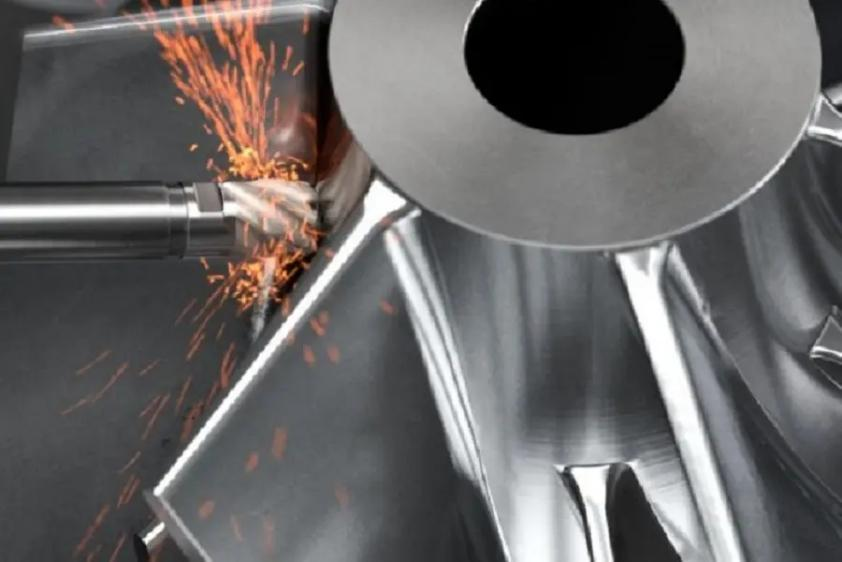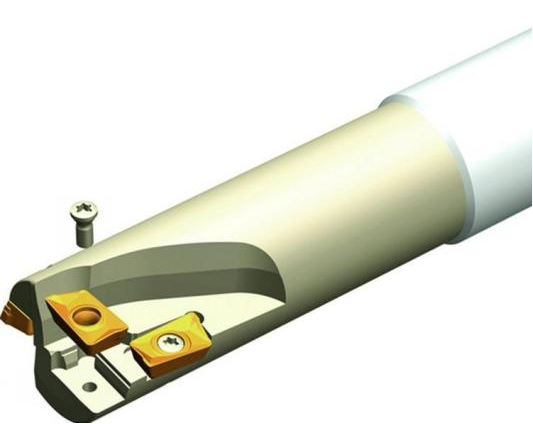Specialized solutions for milling, cutting and drilling tool base materials for high temperature alloys, refractory metals and other parts
- Categories:Application Technology
- Author:Rheniumet
- Origin:
- Time of issue:2022-04-06
- Views:0
(Summary description)Rheniumet Ltd has more than ten years of experience in the application and development of alloy trace addition, and provides rare, scattered and rare precious metal element addition solutions for various alloy manufacturing enterprises. According to the difficulties encountered in milling, cutting and drilling of high-temperature alloys, refractory metals and other parts and components reported by many users in recent years, Rheniumet has finally successfully developed after five years of joint research and development tests with leading domestic enterprises. In order to add ruthenium, rhenium, osmium and other elemental high-purity ultrafine powders specially used to add to the base material of such special cemented carbide tools, or Co-Ru, Re, Os binary and ternary pre-alloyed mixed powders, we also warmly welcome all major High-performance alloy tool manufacturing enterprises and our company jointly develop various special customized tool material grades.
Specialized solutions for milling, cutting and drilling tool base materials for high temperature alloys, refractory metals and other parts
(Summary description)Rheniumet Ltd has more than ten years of experience in the application and development of alloy trace addition, and provides rare, scattered and rare precious metal element addition solutions for various alloy manufacturing enterprises. According to the difficulties encountered in milling, cutting and drilling of high-temperature alloys, refractory metals and other parts and components reported by many users in recent years, Rheniumet has finally successfully developed after five years of joint research and development tests with leading domestic enterprises. In order to add ruthenium, rhenium, osmium and other elemental high-purity ultrafine powders specially used to add to the base material of such special cemented carbide tools, or Co-Ru, Re, Os binary and ternary pre-alloyed mixed powders, we also warmly welcome all major High-performance alloy tool manufacturing enterprises and our company jointly develop various special customized tool material grades.
- Categories:Application Technology
- Author:Rheniumet
- Origin:
- Time of issue:2022-04-06
- Views:0
High-temperature alloys, also known as heat-resistant alloys or heat-strength alloys, are based on iron, nickel, cobalt, etc., and add one or more refractory metal elements such as tungsten, molybdenum, rhenium, tantalum, niobium, zirconium, hafnium, vanadium, etc. , a class of alloy materials that can work for a long time under the action of high temperature above 600 ℃ and certain stress. Superalloys have good comprehensive properties such as high temperature strength, oxidation resistance, corrosion resistance, fatigue resistance and fracture toughness, and are widely used in aero-engines, metallurgical mines, petrochemicals, etc.
1. Difficulties and pain points of milling, cutting and drilling superalloys and refractory metal materials
Superalloys can be said to be one of the most difficult to cut materials among various difficult-to-cut materials. The more strengthening phases in the alloy, the greater the degree of dispersion, the better the thermal strength, and the more difficult it is to cut. The processing difficulties are mainly as follows:
1. Large plastic deformation. The elongation of different superalloys varies greatly, but most of them have a certain shape, and some alloys have a high shape, and the elongation at room temperature can reach 45%.
2. Large cutting force. The superalloy contains a large amount of austenite solid solution with high purity and dense structure, the hardness is greatly improved during cutting, and the chilling phenomenon is serious, so the cutting force is very large, which is 2~3 times larger than that of cutting general steel.
3. The phenomenon of cold and hard is serious. Due to the high softening temperature and low softening speed of superalloys, the hardening phenomenon is serious with temperature cooling. When cutting superalloys, the hardness of the surface of the machined workpiece is 50~100% higher than that of the matrix being machined. This property of the superalloy material also determines that the tool for processing its workpiece must have the characteristics of high red hardness.
4. High cutting temperature. The superalloy produces large plastic deformation during cutting, and at the same time, there is a strong friction between the tool, the workpiece and the chip, which generates a large amount of cutting heat; and the thermal conductivity of the superalloy is very low, resulting in most of the cutting heat concentrated in the narrow In the cutting area, the cutting temperature is increased, up to about 1000 °C.
5. The tool is easy to wear and chip, and the service life is short. Superalloys contain many metal carbides, nitrides, borides and intermetallic compounds, which cause huge friction and abrasive wear to the tool during the cutting process.
6. The machining accuracy is not easy to guarantee. When cutting superalloys, the cutting temperature is high, which will cause thermal deformation of the workpiece and change the size and shape accuracy, which is not easy to guarantee.

2. Special carbide tool material for processing high temperature alloys and refractory metals
Specialized cutting tools for high temperature alloys and refractory metal materials should choose high-hardness and high-strength texture materials with good red hardness and high flexural strength, that is, at temperatures above 600 degrees. Conventional carbide grades are difficult to meet such machining requirements. The combination of hardness and strength of cemented carbide is usually difficult to match reasonably. For a long time, researchers have done a lot of research work in this area, and have taken many measures to improve the hardness, strength and toughness of cemented carbide at the same time. Among them, adding some trace elements, such as chromium Cr, inhibits the grain growth of cemented carbide, and purifies the grain boundary by adsorbing impurities, thereby improving the wettability of WC-Co rare earth elements and their oxides, etc. There are also a small amount of dispersed superhard compounds, as well as metal elements that can form a composite bonding phase with cobalt and Co, which have a certain strengthening effect on improving the performance of cemented carbide cutting tools.
In recent years, with the deepening of research and the promotion of application testing, trace additions of rare and precious metal elements such as ruthenium, rhenium, and osmium have obvious effects on the grain microstructure and red hardness properties of WC-Co cemented carbide. After addition, the abnormal growth of WC grains can be significantly inhibited, and the binary or ternary solid solutions of Co-Ru, Re, Os can increase the melting point of the single Co bonding phase and improve the high temperature strength of the alloy, reaching a certain level. While improving the hardness of the alloy, it also aims to improve the strength of the alloy. According to user tests, the flexural strength of cemented carbides added with rare and precious metal elements such as ruthenium, rhenium, and osmium can be significantly increased from 3200MPA to 4000MPA, an increase of 25%, compared with ordinary WC-Co series cemented carbides without additions. above. In addition, the addition of rare and precious metal elements such as ruthenium, rhenium, and osmium can also reduce the thermal conductivity of the alloy, which ensures the minimum transfer of heat to the cutter body during cutting, and significantly improves the service life of the alloy blade. The addition of osmium and the like can improve the corrosion resistance of WC-Co alloys in acidic solutions and reduce the corrosion rate.
 Rheniumet Ltd has more than ten years of experience in the application and development of alloy trace addition, and provides rare, scattered and rare precious metal element addition solutions for various alloy manufacturing enterprises. According to the difficulties encountered in milling, cutting and drilling of high-temperature alloys, refractory metals and other parts and components reported by many users in recent years, Rheniumet has finally successfully developed after five years of joint research and development tests with leading domestic enterprises. In order to add ruthenium, rhenium, osmium and other elemental high-purity ultrafine powders specially used to add to the base material of such special cemented carbide tools, or Co-Ru, Re, Os binary and ternary pre-alloyed mixed powders, we also warmly welcome all major High-performance alloy tool manufacturing enterprises and our company jointly develop various special customized tool material grades.
Rheniumet Ltd has more than ten years of experience in the application and development of alloy trace addition, and provides rare, scattered and rare precious metal element addition solutions for various alloy manufacturing enterprises. According to the difficulties encountered in milling, cutting and drilling of high-temperature alloys, refractory metals and other parts and components reported by many users in recent years, Rheniumet has finally successfully developed after five years of joint research and development tests with leading domestic enterprises. In order to add ruthenium, rhenium, osmium and other elemental high-purity ultrafine powders specially used to add to the base material of such special cemented carbide tools, or Co-Ru, Re, Os binary and ternary pre-alloyed mixed powders, we also warmly welcome all major High-performance alloy tool manufacturing enterprises and our company jointly develop various special customized tool material grades.
Scan the QR code to read on your phone
Contact Us
Address: Room 401, Building 10, Xinggong Science and Technology Park, No. 100 Luyun Road, Changsha High-tech Development Zone, Hunan
Email:sales@rheniumet.com

scan it Follow us
Copyright: Hunan Rhenium Alloy Material Co., Ltd. ICP No. 13005464-1 Website construction: www.300.cn


